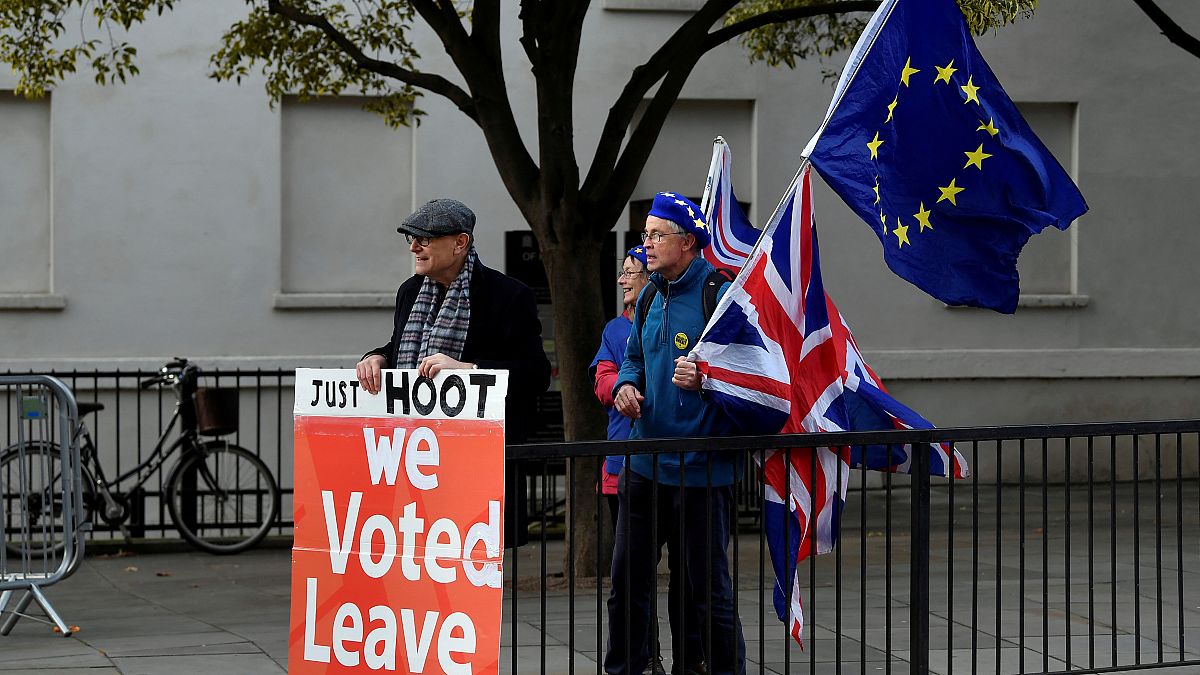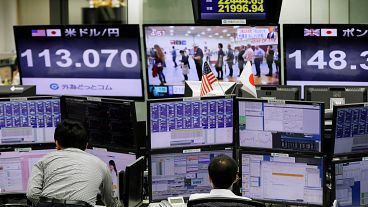Take Five: UK May-day and U.S. curveballs - World markets themes for the week ahead
Following are five big themes likely to dominate thinking of investors and traders in the coming week and the Reuters stories related to them.
1/ CURVE-BALLS
With major parts of the U.S. economy visibly slowing, the Treasury market has reacted in a striking manner - the 10-year yield is close to falling below the two-year yield, which would mark the curve inversion that has preceded every recession in the last 40 years. Signs of slowdown have persuaded markets to bet the Fed will slow the pace of rate increases next year.
But wait. Inflation is running at a 9-month high, annual wage growth a 9-1/2 year high and unemployment at a near-50 year low. So November inflation, due on Dec. 12, will play into how Fed chair Jerome Powell frames the path of future tightening.
So it remains to be seen where the curve goes from here. There are reasons to believe it can steepen and reasons to believe it will invert. Depending on how the incoming data looks - stagflation, anyone? - the Fed's view on where neutral is and what its policy response should be in the coming months is far from clear.
- One part of the U.S. yield curve just inverted; what does that mean?
- Tariff effects broaden across U.S., wage growth higher -Fed
- As Fed says on track, narrowing yield curve could complicate debate
For a graphic on Inflationary Pressures, see - https://tmsnrt.rs/2REoChx
For a graphic on U.S. Yield Curve, see - http://tmsnrt.rs/2zUqXiW
2/ MAYDAY! MAYDAY!
Buckle up for another wild week of Brexit may-hem on sterling and other UK-focused markets.
Britain's parliament is - at the time of writing at least - set to vote on Prime Minister Theresa May's Brexit transition deal on Tuesday, but the chances of it being approved don't look good.
What happens then is... well that's the thing, there are multiple possibilities, all with very different implications.
A really heavy defeat would make it difficult for May to carry on. She has staggered through the last couple of years, taking direct hits from all angles but this could finally bring her down.
Could that then lead to a hard Brexiteer taking the reins and ripping up the deal? Perhaps and sterling won't like that one bit. But it's equally possible that whoever takes over would press pause on the whole process by withdrawing the so-called Article 50 notice. That could even raise the chances of a second public Brexit vote and that could send sterling soaring.
- As Brexit crunch nears, campaign for new referendum gathers pace
- Brexit vote on Dec. 11 will go ahead as planned - PM May's spokesman
- May's Brexit deal under fire as legal advice stiffens opposition
For a graphic on Sterling positions and valuations, see - https://tmsnrt.rs/2QkcsxI
3/ QE NO MORE
Thursday marks the end of an era for the ECB, which is set to formally announce the end of its three-year long, 2.6 trillion-euro monetary stimulus scheme.
For markets, that's a done deal. What matters now is what the ECB does in the face of a weakening economy, global trade tensions, Brexit and Italy. Policymakers have already been floating ideas to support the economy when QE ends. One suggestion is for multi-year loans to banks.
What investors appear more certain about is that the ECB will struggle to bring interest rates back up to zero percent - especially if a U.S. slowdown encourages the Fed to pause its rate-hike cycle. Money market pricing suggests investors expect roughly a 75 pct chance of a ECB rate hike in 2019. But that's down from 100 percent just a few weeks ago.
ECB policymakers debate new ways out of easy money: sources
Italy, Spain and France would face 90 bln euro hit on new ECB "key"
Euro zone inflation dips as ECB braces to end bond buying
For a graphic on European Central Bank QE scheme, see - https://tmsnrt.rs/2RzoTCh
4/ TRADE OFF
So much for the U.S.-China trade truce. If financial markets are any guide, the detente between Washington and Beijing struck over a steak dinner at the G20 in Buenos Aires barely lasted 24 hours. Fears of global trade war and economic slowdown are again driving investor sentiment.
On oil markets, that signals that a 30 percent price slump since October has little hope of reversing.
Oil has also had to contend with OPEC, whose failure to agree an output cut accelerated the slump in prices, pushing Brent below $60/barrel and WTI futures close to breaking below $50. The possibility of small cuts by the likes of Russia and Kazakhstan are unlikely to save the day, given the magnitude of market oversupply.
Commodities overall are in some trouble. Copper is near three-week lows, having lost around 15 percent so far in 2018, while most base metals are down a similar amount. And the Australian dollar, a good proxy for commodities, Chinese demand and world trade, was the worst-performing major currency in the world all week.
Without good news on the trade front, respite is unlikely.
For a graphic on WTI crude oil, see - https://tmsnrt.rs/2RFytnk
- OPEC yet to agree final deal as Iran seeks exemptions
- U.S. trade deficit hits 10-year high; private hiring slows
-China says confident it can clinch trade deal with U.S. as doubts grow
5/ BEIJING COCKTAIL
The United States has just reported its trade deficit hit a 10-year high in October, and its politically sensitive deficit with China surged to a record $43 billion. So markets will watch to see how China hawks in the Trump administration react to China's trade data due for release on December 8.
The data should show whether China is carrying out promises to import more from America. It could well provide more grist for the mill - for U.S. officials pushing for more reasons to punish China and for investors sceptical of the trade ceasefire.
The prospect of a Chinese growth slowdown is keeping investors edgy. So while trade contributes far less to the country's GDP than it used to, there are other data points coming up too - credit growth and retail sales among others - which should show how badly the economy is hurting from the trade war.
U.S. trade deficit hits 10-year high; job growth slowing-
China downplays front-loading as reason behind strong export growth-
For a graphic on China trade, see - https://tmsnrt.rs/2RMo09m



